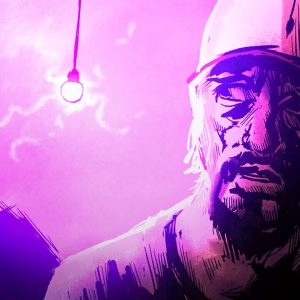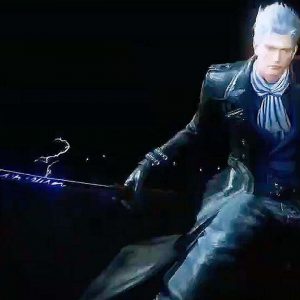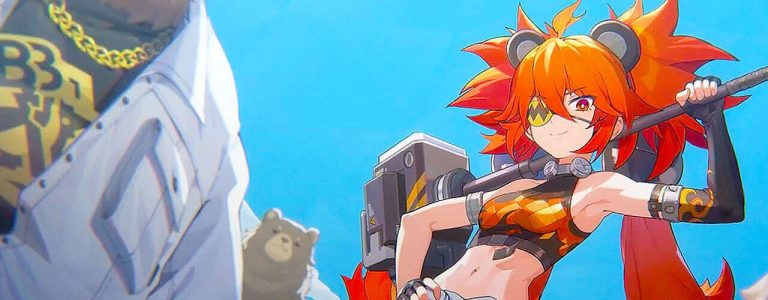[ad_1]
Sea of Solitude is more than just a sad story, it’s a deeply personal journey through loneliness.
Sea of Solitude’s opening words, “I’m still trying to piece it together… but I can’t,” are not just an invitation into a hauntingly beautiful world, they’re a challenge for the player.
Everything that happens in Sea of Solitude has an underlying meaning. Throughout the game, players wanting a strong understanding of Sea of Solitude’s story need to piece together gameplay elements, monster design, dialogue, and more to learn what happened to its lead character, Kay.
Developed by Jo-Mei, a 12-person studio based in Berlin, Germany, Sea of Solitude is an adventure game that takes place in a world where humans turn into monsters when they get lonely. Now a monster herself, Kay is desperately trying to find out why this happened and – more importantly – how to turn back to her human form.
Cornelia Geppert – CEO, Writer, Art & Creative Director for Sea of Solitude – describes the game as “the most personal project [she’s] ever made.” The lead character, Kay, is actually based on herself after going through a bad breakup. But the game isn’t solely about Geppert’s own experience. During development, everyone in the studio shared their own histories with loneliness to create a more diverse story.
“
Sea of Solitude isn’t just about sadness, instead, it explores the different ways loneliness manifests itself.
Sea of Solitude isn’t just about sadness. Instead, it explores the different ways loneliness manifests itself and the secondary emotions it causes. Depression and anger are just two of the “types of loneliness” Sea of Solitude covers. “We have [some other, more] unique types [of loneliness] that people said they’ve never seen in a game before,” said Geppert, “but explaining them would be a spoiler.”
Traveling across the water, Kay encounters her first monster. The creature doesn’t hesitate to verbally drag Kay, calling her by name and telling her she’s “a worthless piece of shit” before making waves that push her away. This is just one example of the horrors she’s bound to uncover, some of which may reflect her inner self.
Finding another way around, or convincing the monster to behave differently, means finding a new path and fixing any “corruptions” that inhabit the area. These are dark spots in the world that need to be removed. Interacting with corruptions to make them disappear parts the clouds of a dark and stormy area, coaxing out the sun, and allowing safe travel through without worrying about enemies.
During its roughly 3-5-hour experience, you can expect light platforming and puzzle solving to progress through the world. Kay is “gifted” a Light Flare from a mysterious girl during the opening scene. This Flare serves as a sort of waypoint that can be shot at any time, guiding Kay ever forward over decrepit buildings and across dangerous waters. This light connects Kay with the mysterious girl who gave it to her so if you’re ever unsure what to do, this Flare will be a sort of lifeline in confusing times.
I found the early stages of Sea of Solitude fairly straightforward. But even if things don’t get harder in later chapters, I’m fine with that. Sea of Solitude’s appeal isn’t necessarily from its challenge but rather its experience. I feel compelled to learn more about this world and the eerily human monsters that inhabit it.
Hearing disjointed voices and sounds in the distances as I walked through muted hallways made me feel on edge. And the first time I saw Kay swallowed by a sea monster, I couldn’t help but wince as her tiny body was limply hurled into the sky like a ragdoll.
“
Sea of Solitude may be a game about shifting weather but it always shines is in its ability to create moments of tension.
Sea of Solitude may be a game about shifting weather but it always shines in its ability to create moments of tension.
During the opening area, Kay is desperately trying to track down that mysterious girl who gave her the Light Flare. While crossing the water Kay says, “I was looking for a girl but I found a buoy.” “I’m sorry,” blurted out Geppert for her terrible pun, but I don’t think she meant it. Sea of Solitude is unapologetically her, right down to the city in the opening scene, which is loosely based on her hometown of Berlin. “It’s a story I want to tell,” says Geppert, “and it’s [an] important [one].”
Sea of Solitude is about loneliness but, by the end of it, Geppert wants people to feel less alone. “I hope that when [players] see the whole journey of Kay, her resolution… and feel empowered,” says Geppert, “I hope they feel better afterward.” But don’t expect a happy ending in the traditional sense.
Closure isn’t on the table for the Sea of Solitude team. “I don’t know if anybody in life will ever really get closure,” notes Geppert, “but being comfortable is the thing [they should strive for]. I try to be as realistic as possible” favoring the human-side of things over Hollywood dream scenarios.
When Sea of Solitude comes out on July 5, 2019 for Xbox One, PS4, and PC it will be the next indie game published by EA under the EA Originals label. Its unique art style sets it apart from other EA Originals, according to Geppert, “because it really comes from a personal experience.” “I was a comic artist at the beginning, so I tried to put 2D style art into a 3D space with SOS as best as I could,” Geppert said, “so I think this is really unique.” The result is a cast of memorable creatures and what’s likely to be an interesting and introspective adventure.
Janet Garcia is IGN’s associate guides editor. Follow her on Twitter @Gameonysus to hear her gush about indie games that may or may not involve monsters.
[ad_2]
Source link
























